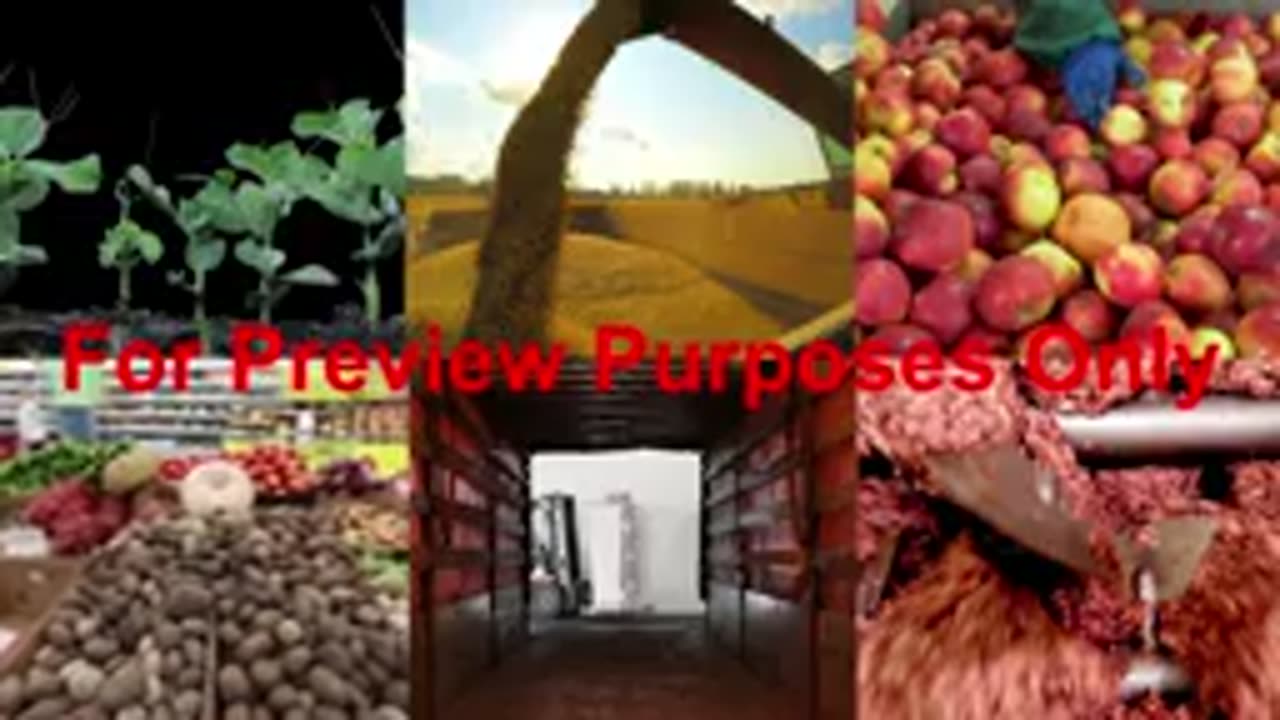Premium Only Content

HACCP Training for the Food Industry from SafetyVideos.com
Here’s a comprehensive overview of a **HACCP Training Program for the Food Industry** inspired by a framework that could be delivered by SafetyVideos.com. This can serve as a guide for what such a training program might include.
---
## **HACCP Training for the Food Industry**
### **Presented by SafetyVideos.com**
**Purpose:**
To educate food industry professionals on implementing the **Hazard Analysis and Critical Control Points (HACCP)** system to ensure food safety and regulatory compliance.
---
### **1. Introduction to HACCP**
- **What is HACCP?**
- A systematic approach to identifying, evaluating, and controlling food safety hazards.
- Widely recognized and required by regulatory authorities worldwide.
- **Importance of HACCP:**
- Prevents foodborne illnesses.
- Protects consumers and enhances brand reputation.
- Ensures compliance with food safety regulations.
---
### **2. The 7 Principles of HACCP**
#### **Principle 1: Conduct a Hazard Analysis**
- Identify potential biological, chemical, and physical hazards in the food production process.
#### **Principle 2: Identify Critical Control Points (CCPs)**
- Determine points in the process where controls are essential to prevent or reduce hazards.
#### **Principle 3: Establish Critical Limits**
- Define acceptable limits (e.g., temperature, pH levels) for each CCP.
#### **Principle 4: Monitor CCPs**
- Implement procedures to monitor critical limits and ensure control measures are effective.
#### **Principle 5: Establish Corrective Actions**
- Develop plans to address deviations from critical limits.
#### **Principle 6: Verify the System**
- Regularly verify that the HACCP system is working effectively (e.g., through audits or reviews).
#### **Principle 7: Establish Documentation and Record-Keeping**
- Maintain comprehensive records to demonstrate compliance and traceability.
---
### **3. Common Hazards in the Food Industry**
- **Biological Hazards:** Bacteria (e.g., Salmonella, Listeria), viruses, and parasites.
- **Chemical Hazards:** Pesticides, cleaning agents, and food additives.
- **Physical Hazards:** Glass, metal, plastic, or other foreign objects.
---
### **4. Developing a HACCP Plan**
- Form a multidisciplinary HACCP team.
- Conduct a thorough risk assessment of your food production process.
- Identify CCPs and establish controls tailored to your facility.
---
### **5. Implementation and Maintenance**
- Train all employees on HACCP principles and their specific roles.
- Integrate HACCP procedures into daily operations.
- Continuously review and update the HACCP plan as processes or regulations change.
---
### **6. Benefits of HACCP Certification**
- Enhances food safety and quality assurance.
- Builds customer trust and satisfaction.
- Improves operational efficiency by reducing risks and waste.
---
### **7. Interactive Training Components**
- **Case Studies:** Real-life examples of HACCP implementation in the food industry.
- **Hands-On Exercises:** Practice hazard analysis, CCP identification, and corrective action planning.
- **Knowledge Check:** Quizzes and scenario-based assessments to test understanding.
---
### **8. Certification**
Participants who successfully complete the training will receive a HACCP Certificate, demonstrating their commitment to food safety and industry standards.
---
### **Key Takeaway Message:**
**"HACCP isn’t just a requirement—it’s a responsibility. Safety starts with you!"**
Would you like assistance in creating more detailed lesson plans, visuals, or slides for this training module?
-
 6:54
6:54
HSESafetyInformation
3 months ago6 Must Try Breakfast recipes By Food Fusion
341 -

BubbaSZN
5 hours ago🔴 LIVE - NEW FORTNITE CHAPTER 6 SEASON 3 UPDATE
17.1K2 -
 DVR
DVR
BlackDiamondGunsandGear
4 hours ago🔴 After Hours Armory LIVE SHOW / TN Tactical
23.1K1 -
 3:14:56
3:14:56
megimu32
5 hours agoOFF THE SUBJECT: FAFO - Bodycam Chaos + Fortnite Mayhem
21.7K10 -
 DVR
DVR
DLDAfterDark
4 hours ago $1.36 earnedDLD Live! BDGG Josh - TN Tactical - The After Hours Armory
20.1K1 -
 LIVE
LIVE
Mossy
4 hours ago🎯RIPS AND CLIPS🎯$2000 FORTNITE ACCOUNT BACK LFG🍃RUMBLERRARIA?🍃#RUMBLETAKEOVER✅
258 watching -
 25:07
25:07
The Why Files
17 days agoThe Midnight Game | When Ancient Shadows Come To Play (STRIPPED)
46K49 -
 13:05
13:05
Actual Justice Warrior
16 hours agoNew Jersey Shuts Down TEEN Mobs
18.2K24 -
 9:27
9:27
MattMorseTV
9 hours ago $4.36 earnedTrump just CALLED their BLUFF.
15.9K20 -
 1:56:32
1:56:32
The Illusion of Consensus
5 hours ago $1.69 earnedUnderstanding Gender Dysphoria: A Deep Dive with Mia Hughes
14.4K5